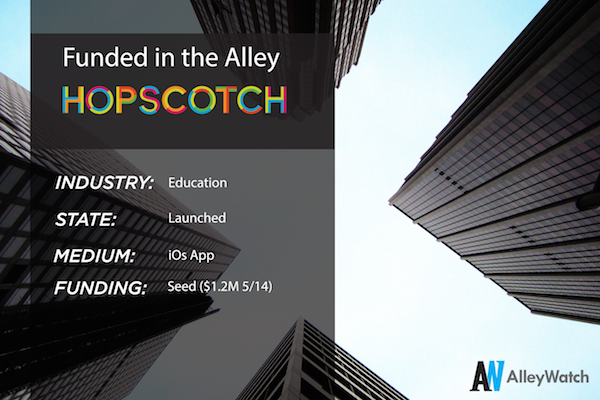A winner is a winner and teaching kids to code without having to type, well, that’s a winner. Hopscotch is a colorful drag-and-drop tool that not only teaches kids how to code – they’re building their own fun projects. Think of it as the legos for software – part tool, part toy, 100% mobile and completely engaging.
They’re also winners of the Big Apps competition, the Parent’s Choice Gold Award and the 2014 Best Educational Technology from the Children’s Technology Review. The news it out that they’ve also raised $1.2 million in funding from Resolute Ventures, Collaborative Fund, and Kapor Capital, among others. They closed the round in August, but the announcement was just made, along with the released of their newest version of the app. Co-founder Jocelyn Leavitt tells us how it all happened and shows us how the girl’s got game!
Tell us about your product or service.
Hopscotch is a startup that builds tools to help kids create their own software. Our iPad app enables users to learn computer programming concepts by dragging and dropping command blocks into scripts to make animations, games, and interactive art. Our app launched a little more than a year ago — in April 2013 — and we’re proud to say that it’s currently being used by kids and teachers in over 100 countries.
How is it different?
Hopscotch is a visual programming language, and we were the first-ever programming language designed for mobile devices. We think the mobile interface is more interactive. Kids can physically touch the screen and move the coding blocks around. Typing, dragging and dropping on a computer browser feels less tangible and more tedious.
Also, most beginner programming applications are challenge-based — users are assigned specific tasks that they need to beat, in each “level.” Hopscotch is different because it’s completely open-ended; kids can create whatever animations or games they imagine.
What market you are targeting and how big is it?
We say that Hopscotch is targeted towards kids 8 to 12, but kids as young as 5 and 6 have enjoyed using it, and many adults around the world love it, too. So the market’s big, to say the least!
What’s your business model?
In the coming months, we’re planning on adding in-app purchases.
What was the funding process like?
I think ours was pretty typical. We were especially lucky early on to meet with some excellent investors with a lot of great experience who really shared our vision of what was possible. I think what was helpful is that we didn’t start raising money until after we launched (last April) and we could show really good initial traction that pointed to a big gap that we were filling in the market.
What are the biggest challenges that you faced while raising capital?
We did all our fundraising during the summer, which is something you’re not supposed to do, and having gone through the experience myself, I advise against it. Everyone is traveling, and on vacation, and schedules are impossible to sync up.
What factors about your business led your investors to write the check?
Computer programming education for children is an exciting space; people are really starting to recognize the value of introducing kids to coding at a young age and we were the first to bring the concept to a mobile device. The idea of a large and growing community and the potential for monetizing the same users multiple times was really important. As a team of educators and engineers, we were in a unique position to create an engaging and educational product.
How did winning the Big Apps competition help your company?
Winning the Big Apps competition brought the app a lot of great exposure. It was also just awesome to be able to meet the mayor! Since then, we’ve received further critical acclaim; we won the Parent’s Choice Gold Award and the 2014 Best Educational Technology from the Children’s Technology Review.
What are the milestones you plan to achieve in the next six months?
Our main goal for the next six months is to begin bringing in revenue.
What advice can you offer companies in New York that do not have a fresh injection of capital in the bank?
As long as you can keep yourself going, you can do a lot yourself and fill in the gaps with talented friends who can help (corollary: make friends with talented people). We bootstrapped Hopscotch for over a year before raising money. Having extra capital is nice, but fundraising is distracting, and the most important thing is to prove out that users want to buy what you’ve got to sell. It’s the classic “make something people want” concept as popularized by PG (Paul Graham) — everybody knows it in theory, but few do it in practice.
Where do you see the company going now over the near term?
In the near term, we’re focused on making the product better and better, and sharing more of what we’re doing with the world. We’ve seen a lot of excitement around building and sharing projects in our community. Enabling this kind of creativity is really rewarding.




